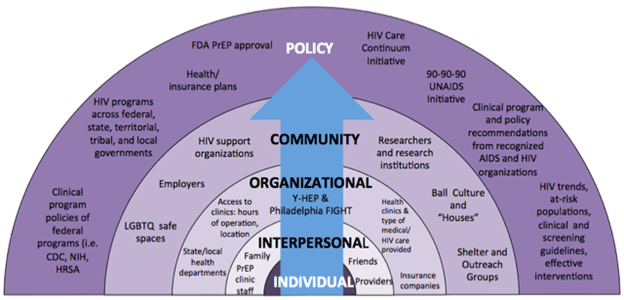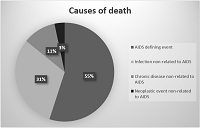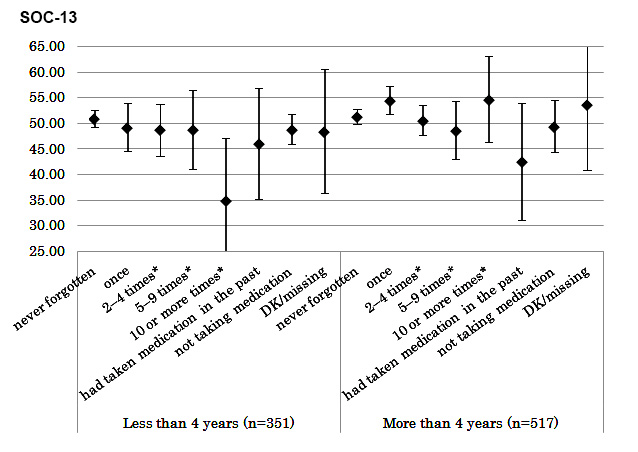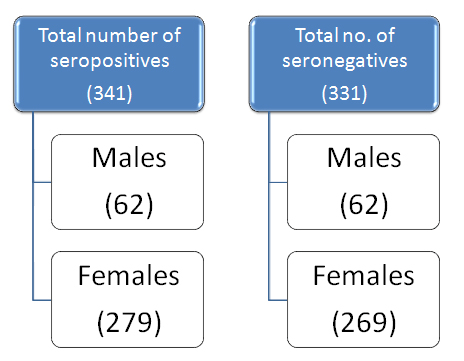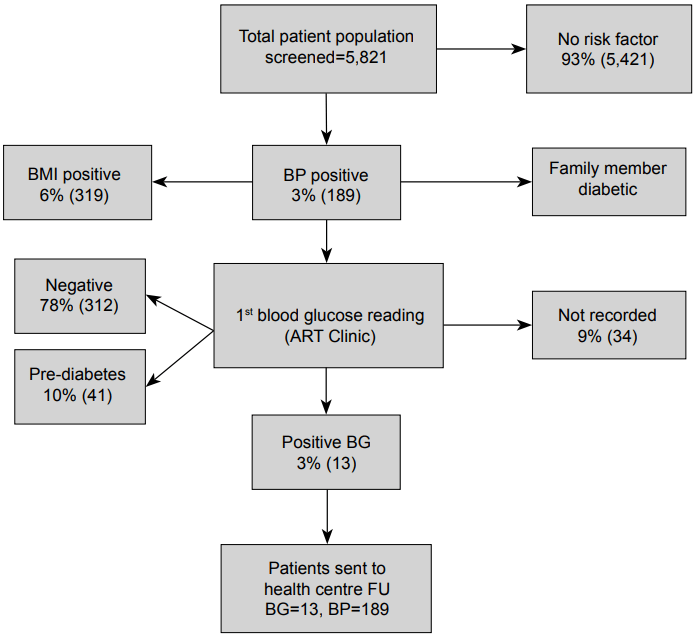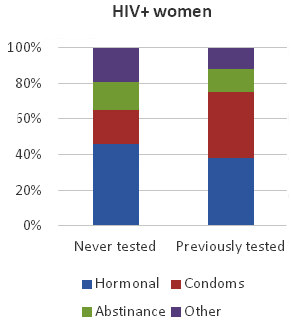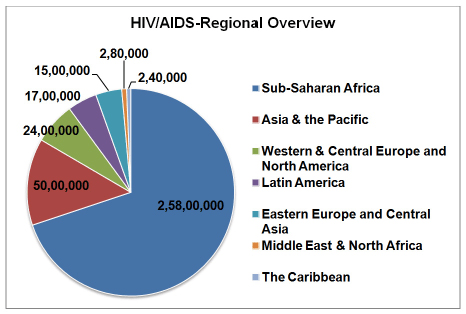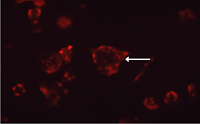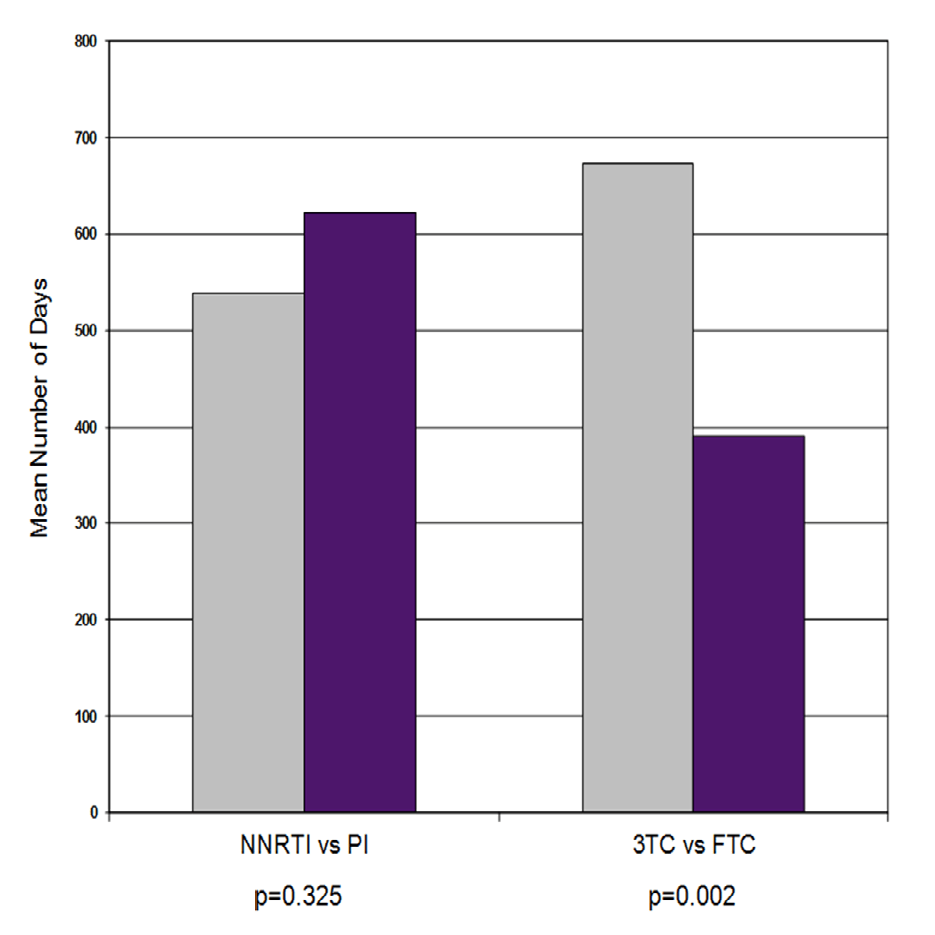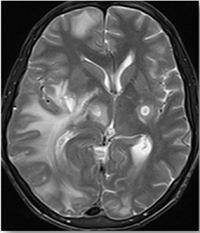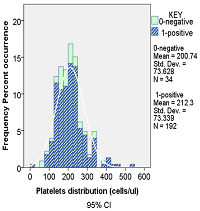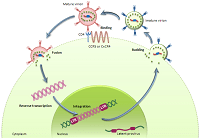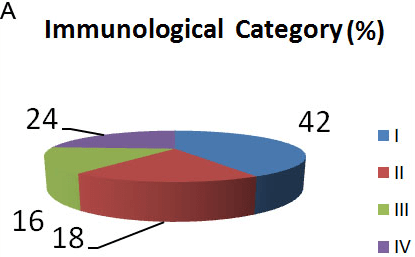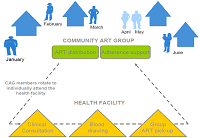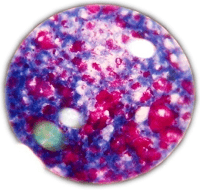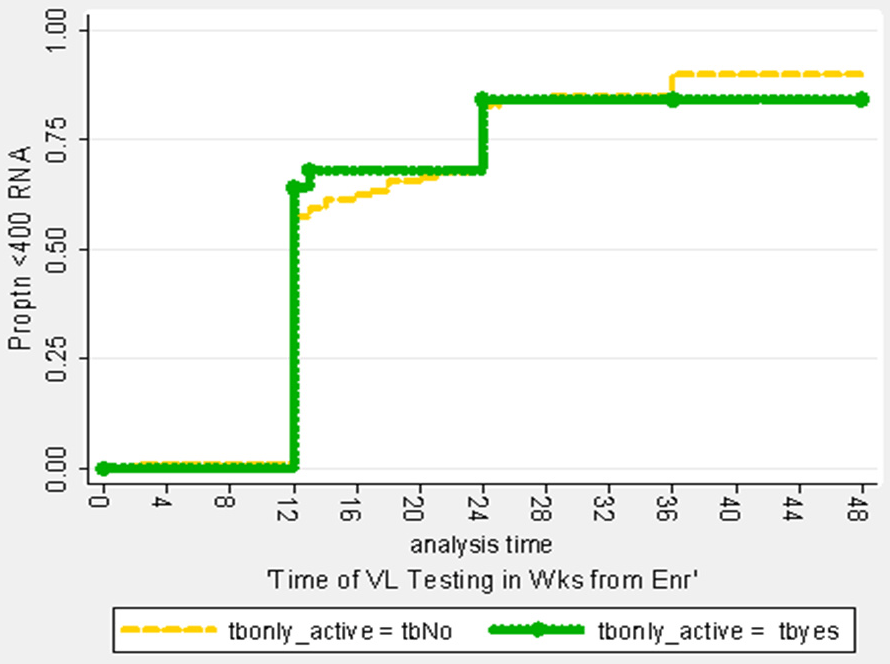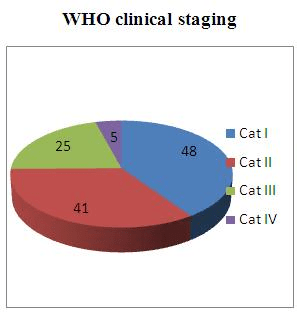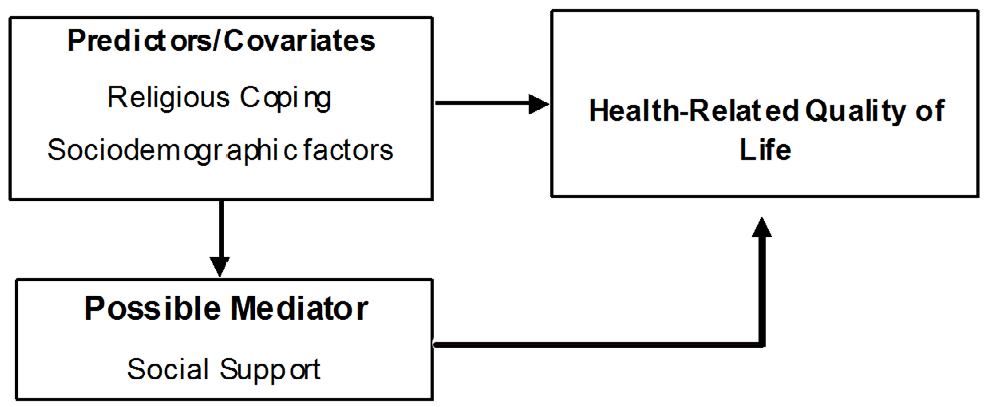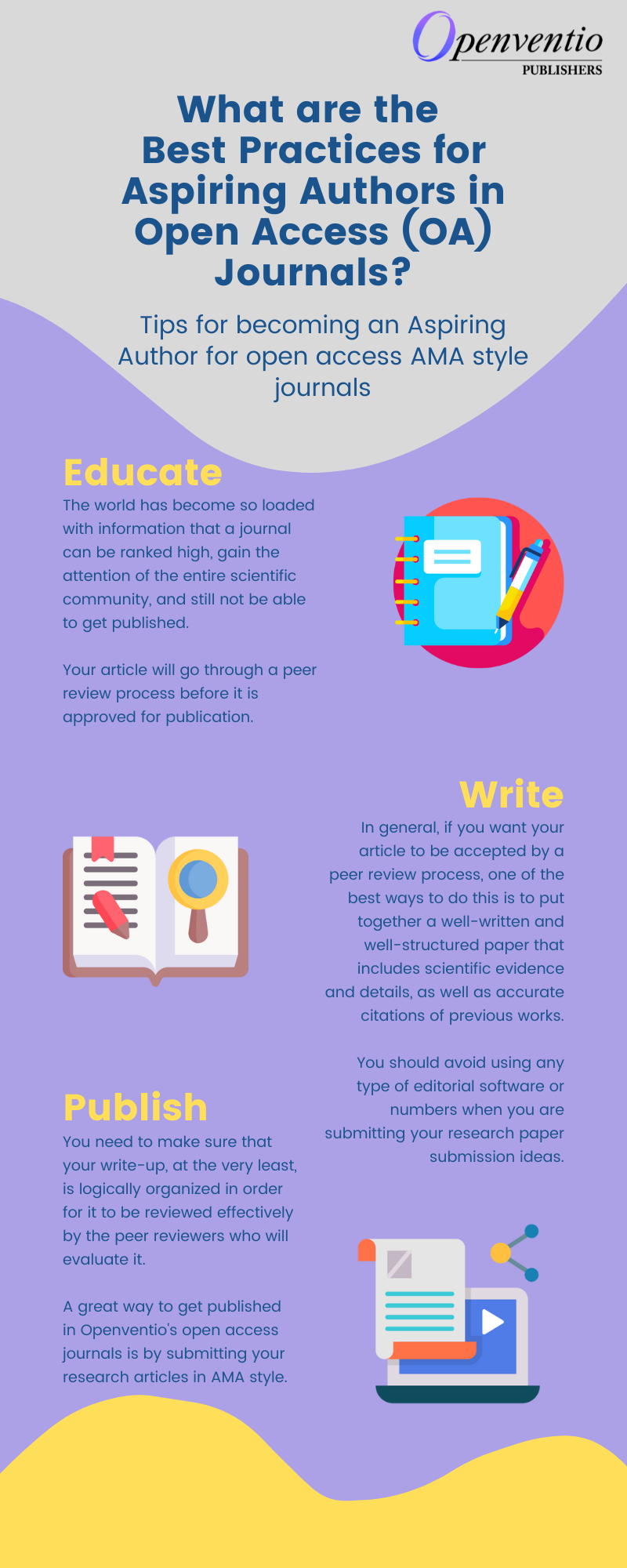HIV/AIDS Research and Treatment – Open Journal [ISSN 2377-8377] serves as a beacon of knowledge, shedding light on the intricate world of HIV (Human Immunodeficiency Virus) and AIDS (Acquired Immuno Deficiency Syndrome). These intertwined conditions have a profound impact on the lives of millions worldwide, both those infected with the virus and those indirectly affected by its consequences.
HARTOJ bridges the gap between various disciplines, providing a comprehensive platform for HIV research and development. Its focus encompasses a vast spectrum, ranging from the fundamental intricacies of medical science to the translational bridge between laboratory findings and real-world application, and the broader epidemiological landscape that sheds light on the patterns and spread of the virus.
This vibrant platform welcomes diverse voices—from basic scientists to practitioners—all guided by our esteemed editorial board. Their meticulous peer review ensures only the most groundbreaking research illuminates the path towards prevention, treatment, and ultimately, a brighter future for those living with HIV and AIDS.
Our Commitment to Diversity, Equity, Inclusion, and Accessibility Capacity (DEIAC)
At Openventio, we are committed to promoting Diversity, Equity, Inclusion, and Accessibility Capacity (DEIAC) in all aspects of our publication. We believe that DEIAC is essential for advancing scientific knowledge and improving health outcomes for all. We strive to create a publication environment that is open, fair, respectful, and representative of the diversity of the scholarly community and society at large. We adhere to the Principles of Transparency and Best Practices in Scholarly Publishing and follow the guidance and recommendations from various resources on DEIAC in scholarly publishing. We welcome and support the participation and contribution of authors, editors, reviewers, and readers from diverse backgrounds, perspectives, and experiences. We also monitor and evaluate the impact and effectiveness of our DEIAC policies and practices, and seek to continuously improve them.
HARTOJ: Illuminating the Path to an AIDS-Free Future
Trending Topics
- Harnessing CRISPR-Cas9 for a functional HIV cure
- Overcoming disparities in PrEP access and uptake
- The rise of telehealth in HIV care and management
- Long-term effects of HIV on gut health and the microbiome
Aims and Scope
- Publish high-quality research across all facets of HIV/AIDS, from basic science to clinical trials and public health interventions.
- Promote open access and knowledge sharing to empower researchers, clinicians, policymakers, and the public in the fight against AIDS.
- Foster collaboration and interdisciplinary dialogue to accelerate the development of innovative prevention, treatment, and cure strategies.
Audiences
- Researchers exploring the intricate biology of HIV and AIDS
- Clinicians providing comprehensive care to individuals living with HIV
- Public health officials designing effective prevention and treatment programs
- Policymakers shaping national and international responses to the epidemic
- Patients and communities seeking accurate information and empowered strategies
Publishing Schedule
Openventio follows a flexible publishing schedule, releasing articles bi-annually or annually based on editorial considerations and submission volume. While we strive for consistent frequency, exceptional circumstances may occasionally necessitate adjustments to ensure the quality and timeliness of published content.
Archiving
CrossRef is a major player in the world of digital archiving for scholarly publications. At Openventio, we believe in preserving knowledge for future generations. That’s why we proudly leverage CrossRef DOIs (Digital Object Identifiers) to archive all our published articles. These unique, persistent identifiers act as a key, ensuring your research remains accessible and discoverable forever, even if publisher platforms or URLs change. Imagine your work, always retrievable, always relevant, contributing to the ever-evolving tapestry of knowledge. With CrossRef DOIs, your research embarks on a journey that transcends time, leaving a lasting mark on the academic landscape.
Openventio Publishers CrossRef DOI prefix is: 10.17140
By championing open access and diverse perspectives, HARTOJ stands as a vibrant platform for cutting-edge research, insightful clinical experiences, and critical discourse on the ever-evolving landscape of HIV/AIDS.
Join us in igniting the fire of knowledge and illuminating the path towards a future free from this global challenge.
A New Era of Ethical Publishing!
The tide has turned in scholarly publishing, thanks to organizations like COPE, DOAJ, OASPA, ICMJE, and AMA. They’ve diligently set the bar for ethical conduct, ushering in a golden age of research integrity.
Openventio Embraces the Standard
We at Openventio wholeheartedly applaud these efforts. We’re committed to upholding the highest scientific and ethical standards, striving for excellence in everything we publish.
Guiding Our Steps
To safeguard the integrity of our publications, we pledge to be guided by:
- Unwavering Freedom: We defend academic freedom and the right to publish advanced research.
- Rigorous Quality: We maintain uncompromising standards for research, ensuring scientific openness, integrity, and ethical conduct across disciplines.
- Evolving Best Practices: We support established best practices while embracing and promoting emerging standards to keep you informed and empowered.
- Pioneering Paths: We publish the latest models and promote advocacy, education, and innovative content, pushing the boundaries of research.
- Reaching the World: We ensure effective dissemination of research results, leveraging cutting-edge publishing technology to reach the widest audience possible.
By embracing these principles, Openventio stands as a beacon of ethical, high-quality publishing, dedicated to advancing knowledge and making a difference in the world.
PUBLISHING PRINCIPLES
General Guidelines
Structure and Flow: At Openventio, we recognize the value of organized and logical presentation in research articles. While the modern AIMRAD format (Aims, Introduction, Methods, Results, and Discussion) serves as a strong foundation, we understand that flexibility is key. We encourage authors to adapt the structure to best suit their research and ensure clear communication of findings. Different article types like meta-analyses or case reports may benefit from non-linear structures, and we welcome innovative approaches that enhance reader understanding.
Embracing the Power of Technology: The digital age has opened doors for enriching research publications. Authors can enhance their work by incorporating supplementary materials, interactive elements, and cross-linking to relevant resources. It is important to note that all supplemental materials should be submitted alongside the primary manuscript for peer review.
Reporting Guidelines
Rigor and Transparency: Openventio upholds accurate and detailed reporting for all research published in our journals. We advocate for authors to adhere to relevant reporting guidelines like Consolidated Standards of Reporting Trials (CONSORT) for trials, STrengthening the Reporting of OBservational studies in Epidemiology (STROBE) for observational studies, Preferred Reporting Items for Systematic Reviews and Meta-analyses (PRISMA) for systematic reviews, STAndards for the Reporting of Diagnostic accuracy studies (STARD) for diagnostic accuracy studies and Meta-analysis Of Observational Studies in Epidemiology (MOOSE) for for reporting meta-analyses of observational studies. These guidelines offer structured frameworks that ensure essential information is presented, allowing for thorough evaluation by editors, reviewers, and readers.
Review Manuscripts with Confidence: Authors crafting review manuscripts should actively document their search methodology, including data source selection, extraction, and synthesis processes. This level of transparency is crucial, especially for systematic reviews, to build trust and enable readers to effectively assess the evidence presented.
Valuable Resources: Seeking guidance on reporting guidelines? Explore resources like the EQUATOR Network and the NLM’s Research Reporting Guidelines and Initiatives. These platforms offer invaluable tools and expertise to help authors adhere to best practices and deliver high-quality research publications.
SUMMARY OF MANUSCRIPT FORMATS AND TYPES
Openventio offers diverse manuscript formats, including full-length articles, short articles, protocol papers, and short communications, each adhering to specific requirements outlined in the table below.
|
Format
|
Description |
Research-based |
Review-based |
Case-based |
Other
|
|
Full Article
|
Comprehensive reporting of research findings or literature reviews. |
Original Research, Observational Study, Retrospective Study, Technical Report, Systematic Review, Literature Review, Scoping Review, Narrative Review, Case Series, Case Study |
Review |
-NA- |
Editorial, Special Editorial, Opposite to the Editorial, Opinion, Perspective |
|
Short Article
|
Concise presentation of research findings, reviews, or opinions. |
Brief Research Report, Research Letter, Book Review, Mini Review, Case Report, Short type, Letter to the Editor (related to case study/series), Case Illustration, Commentary, Hypothesis, Short Communication, Opinion |
-NA- |
Case Report |
Editorial, Letter to the Editor, Short Communication, Opinion |
| Protocol Paper |
Detailed description of research methodology for planned studies. |
Research Protocols, Research Clinical Trials Protocol |
-NA- |
-NA- |
-NA- |
| Short Communication |
Brief presentation of new ideas, preliminary findings, or case reports with limited data. |
Research Letter |
-NA- |
Short type, Letter to the Editor (related to case study/series), Case Illustration |
Hypothesis, Short Communication, Illustrations, Announcements
|
GUIDE TO MANUSCRIPT TYPES, REQUIREMENTS, AND KEY INFORMATION
Navigating manuscript submission is made easy with Openventio’s guide. It clarifies manuscript type selection, type of abstract selection, structure, figures/tables, length, and content highlights, ensuring a smooth preparation process.
|
Manuscript Type
|
Abstract |
Figures/Tables |
Scope |
Length |
Content Highlights
|
|
Original Research
|
Structured, 300 words |
Yes, 4-5
|
In-depth original data analysis, significant findings, and novel conclusions supported by robust statistical evidence. |
4-5000 words |
– Introduction: Clearly state the research question and background.
– Materials and Methods: Describe methodology in detail, including materials, procedures, and statistical analysis.
– Results: Present findings objectively and logically, with tables and figures for key data.
– Discussion: Interpret results in the context of existing literature, address limitations, and draw conclusions. |
| Brief Research Report |
Structured, 250 words |
Yes, 4 |
Preliminary findings from early-stage research or studies with limited data.
|
2-2500 words
|
– Introduction: Briefly state the research question and rationale for the study.
– Materials and Methods: Summarize methodology, highlighting key procedures.
– Results: Present pilot findings concisely, focusing on significant observations.
– Discussion: Interpret results with caution, acknowledge limitations, and suggest future directions.
|
| Research Protocol |
Structured, 300 words |
Yes, 4 |
Extensive details, justification, ethics |
2000 words |
– Comprehensive plan for a research project, including justification, ethics considerations, and detailed methodology. |
| Research Clinical Trial Protocol |
Structured, 300 words |
Yes, 2 |
Follows ICH Good Clinical Practice guidelines |
3500-4000 words |
– Detailed plan for a clinical trial adhering to international ethical and scientific standards. |
| Research Letter |
No |
Yes, 2 |
Concise findings |
1200-1800 words |
– Brief reports on original research, case studies, or significant new findings. |
| Observational Study |
Structured, 250-300 words |
Yes, 2 |
Complies with data, pre-informed participants |
3000 words |
– Analysis of existing data collected from observational studies without experimental manipulation. |
| Review |
Structured, 300 words |
Yes, 2 |
Understandable language, significant references |
2500 words |
– Critical evaluation of existing literature on a specific topic. |
| Book Review |
Unstructured, 100-250 words |
May/May not include |
Recent, relevant journal, details included |
1500-2000 words |
– Critical evaluation of a recently published book related to the journal’s field. |
| Mini Review |
Unstructured, 200 words |
Yes, 2 |
Understandable language, necessary figures/tables |
1500-2000 words |
– Concise and focused review of a specific topic within the journal’s scope. |
| Systematic Review |
Structured, 300 words |
Yes, 4 |
Detailed methodology, statistical tools, comparisons |
2500 words |
– Comprehensive identification and analysis of all relevant primary research on a specific topic.
– Systematic search strategy, clear inclusion/exclusion criteria, and quality assessment of studies.
– Detailed description of statistical methods used for data synthesis and meta-analysis (if applicable).
– Critical evaluation of the findings, addressing potential biases and limitations.
– Clear and concise presentation of results, highlighting key findings and implications for future research. |
| Scoping Review |
Structured, 300 words |
Yes, 2 |
Aims to map and summarize the existing evidence on a broad topic within the journal’s scope. |
2500 words |
– Requires a structured abstract outlining the review objectives, search strategy, and inclusion/exclusion criteria.
– Emphasizes detailed methodology, including database searches, reference management, and quality assessment of included studies.
– Presents a clear overview of the identified studies, focusing on key themes, trends, and knowledge gaps. |
| Case Report |
Unstructured, 250 words |
Yes, 2 |
Original, unreported entity or new presentation |
2500 words with clinical/radiological/pathological images |
– Description of a unique or previously unreported clinical case.
– Detailed presentation of clinical findings, including history, examination, investigations, and management.
– Discussion of the differential diagnosis and potential underlying mechanisms.
– Inclusion of relevant clinical/radiological/pathological images. |
| Case Series |
Unstructured, 250 words |
Yes, depends on the number of cases presented |
In similar cases, a comprehensive literature review |
2500 words with images |
– Description of a series of similar cases with a specific condition or treatment.
– Comparison of individual cases, highlighting common features and variations.
– Comprehensive review of existing literature on the topic.
– Discussion of the clinical implications and potential future directions.
– Inclusion of relevant clinical/radiological/pathological images. |
| Technical Report |
Structured, 300 words |
Yes, 3 |
Original data supporting technology development |
3000 words |
– Description of a novel technology or innovation with potential applications.
– Clear explanation of the technical principles and underlying mechanisms.
– Presentation of original data demonstrating the performance and effectiveness of the technology.
– Discussion of the limitations and future development plans. |
| Letter to the Editor |
No |
May/May not include |
Supports/refutes/adds information to published work |
500-1000 words |
– Comments on or critiques a previously published article in the journal.
– Provides additional information or alternative perspectives not covered in the original work.
– Presents new data or arguments to support or refute the published findings.
– Maintains a respectful and constructive tone. |
| Editorial |
Unstructured, 100 words |
No |
Precise, concluding arguments without sections |
500-1000 words |
– Authoritative opinion piece on a topic relevant to the journal’s |
| Commentary |
No |
Yes, 1 |
Optional references |
1000-1500 words |
– Can include personal opinions and interpretations, but should be evidence-based and objective. |
| Hypothesis |
Structured, 300 words |
Yes, 2 |
Testable and realistic, verifiable by statistics |
2500 words |
– Requires a structured abstract for a concise summarization of the hypothesis and rationale. |
| Opinion |
No |
Yes, 1 |
Flexible format |
1500-2000 words |
– Flexible format, allowing for personal perspectives and arguments. |
| Perspective |
No |
Optional, 2 figures/tables |
Similar to opinion, separate methods section, if detailed |
2500 words |
– Can present novel interpretations or insights based on existing research. |
| Short Communication |
Unstructured, 250-300 words |
Optional, 2 figures/tables |
New ideas, controversies, negative results, suggestions |
1500-2000 words |
– Unstructured format, allowing for concise presentations without extensive data or methods sections. |
| Errata |
No |
Optional, 1 figure/table |
Brief statements addressing errors and corrections |
500-800 words |
– Provides a clear explanation of the mistake and its rectification. |
| Illustrations |
No |
Yes, Clinical/diagnostic/investigative images |
Brief history, case discussion, conclusion |
800-1000 words |
– Requires a brief history of the case, case discussion, and concluding remarks contextualizing the images. |
| Conference Proceedings |
Structured, 250-300 words |
Optional, 2 figures/tables |
Presented papers from scientific conferences, symposia, or workshops |
500-1000 words
(unpublished research) |
– Includes abstracts, full papers, or links to full reports for unpublished research |
| Announcements |
No |
No |
Conferences, workshops, seminars contact information, website details, etc |
500-1000 words |
– Includes contact information, website details, and registration instructions for interested participants. |
*Note. The overall length of the manuscript might vary as per the editors’ or reviewers’ demand during the peer-review process.
OPENVENTIO’S MANUSCRIPT PREPARATION GUIDE
This guide provides essential information for preparing and submitting manuscripts to Openventio journals.
General principles:
- Maintain high academic standards: Ensure your research adheres to scientific rigor, ethical considerations, and transparency.
- Present original work: Submit only original work that has not been previously published elsewhere.
- Follow format guidelines: Adhere to the specific formatting instructions for the chosen manuscript type.
- Use clear and concise language: Write in a style that ensures clarity and accessibility of language for both specialists and a broader audience.
- Proofread carefully: Ensure your manuscript is free of grammatical errors and typos.
MANUSCRIPT ELEMENTS
Mastering your manuscript’s structure is a breeze with Openventio’s detailed instructions. They break down each element, from the title page and abstract to methods, results, and discussion, guaranteeing a well-organized and impactful presentation.
|
Element
|
Description |
Requirements
|
|
Title
|
Concise and informative, reflecting the main research question or finding. |
No more than 25-28 words, avoid abbreviations and formulae if possible. |
|
Subtitle
|
Amplifies the title & aids in information retrieval. |
Briefly informs readers about the study focus. Doesn’t include key findings or conclusions. Maintains brevity and clarity. |
|
Authors’ List
|
Signatures of contributors; listed according to academic contribution. |
Includes 1-N authors with the highest academic credential(s) and affiliation(s). |
|
Author’s Affiliation
|
Department(s), and Institution(s)/Universities of the author(s). |
Mention ORCID ID, department, institution/university/organization, street address, city, state, zip code, country). |
|
Corresponding author
|
Primary contact for readers and editors. |
Name, credentials, designation, complete affiliation, email address, phone and fax. Indicate the corresponding author. |
|
Abstract
|
Structured (except for Research Letters, Short Communications, and some others). |
300 words, summarizing the research question, methodology, key findings, and conclusions. |
|
Keywords
|
Relevant to the research topic and facilitating search. |
3-5 keywords. |
|
Introduction
|
Provides background and context for the research. |
Clearly states the research question or hypothesis. |
|
Epigraphs
|
Short thematic quote starting your article. |
Italics, Flush left, Signature underneath, flush right, Reference in superscript (if cited), Otherwise, Author and title of work. |
|
Materials and Methods
|
Describes the research methodology in detail. |
Sufficient information for replication of the study. |
|
Results
|
Presents the findings of the research. |
Organized and clear presentation of data, analysis, and figures/tables. |
|
Discussion
|
Interprets the results and their significance. |
Addresses limitations and future research directions. |
|
Conclusion
|
Summarize the main findings and their implications. |
Concise and impactful statement. |
|
References
|
Accurately cites all sources used in the manuscript. |
Follow the journal’s preferred referencing style from the reference section below (AMA Manual of Style). |
|
Footnotes
|
Used for URLs, affiliations, minor clarifications like the death of an author, etc. |
Use superscript alphabets in text and corresponding numbers in footnote section |
|
Figures and Tables
|
Supplement the text by presenting data visually. |
Clearly labeled and numbered, with informative captions. The preferred file formats are TIFF, PNG, and JPEG with a high resolution of 300 dpi or higher. |
|
Figures/Tables Legend
|
Conveys the topic of the tables and figures succinctly. |
Brief, specific, and descriptive titles/legends are accepted. |
|
Figures/Tables Number
|
Unique identifier for each figure/table. |
Sequential numbering starts with 1. |
|
Data Sources
|
Citation of original source(s) for the data if applicable |
Follow the journal’s preferred citation style given in the reference section. |
|
Symbols and Abbreviation Key
|
Explanation of symbols and abbreviations used in the figure/table |
If necessary, define all symbols and abbreviations clearly. |
|
Addendum
|
Supplementary information is not crucial to the main text. |
Contains data, questionnaires, methods, and figures. Clearly label and organize addendum content. |
REFERENCES STYLE
Following the AMA Manual of Style, Openventio encourages authors to cite all sources employed in their manuscripts, encompassing both traditional (published print/online) and emerging (books, news, websites) publications. Citations should be numbered in the text to correspond with the “References” section, which must comprehensively list all cited sources and provide links to referenced tables/figures. The list of each category of reference is given below:
| Reference Category |
Format Example |
Notes
|
|
Journal Reference
|
Piven EF. Increasing adherence to the diabetes regimen: An occupational therapy perspective. Diabetes Res Open J. 2014; 1(1): e1-e2. |
In case of more than 6 authors, provide the name of the first three authors followed by et al.
If there is no author then start the references with the title. |
| Journal Article (without volume/issue) |
Author 1, Author 2, Author 3, et al. Title. Journal short name. year: pp. |
Use short name for journal. |
| Journal Article (with volume/issue) |
Author 1, Author 2, Author 3, et al. Title. Journal short name. year; Vol(issue no.): pp-pp. |
Specify volume and issue number after year. |
| Part of an Issue |
Author 1, Author 2, Author 3, Author 4, Author 5, Author 6. Title. Journal short name. year; Vol(issue no, pt 3): pp-pp. |
Indicate “pt” for part before page numbers. |
| Complete Special/Theme Issue |
Robert J, Stacey RA, eds. Blindness. Ophthalmol. 2016; Vol(3, theme/special issue): pp-pp. |
Include editors and “theme/special issue” after volume. |
| Supplement (numbered, no issue) |
Author 1, Author 2, Author 3, et al. Title. Journal short name. year; Vol(suppl 4): pp-pp. |
Use “suppl” before supplement number. |
| Supplement (numbered, with issue) |
Author 1, Author 2, Author 3, et al. Title. Journal short name. year; Vol(issue)(suppl 6): pp-pp. |
Include issue number before “suppl”. |
| Supplement (several parts) |
Author1, Author 2, Author 3, et al. Title. Journal short name. year; Vol(issue)(suppl 6B): 17S-21S. |
Specify part (e.g., 6B) after supplement number. |
| Abstract from Source |
Author 1, Author 2, Author 3, et al. Title. [abstract taken from Arch Ophthamol. 2004; 122(1):55-56]. Journal short name. year; Vol(issue): pp-pp. |
Include source of abstract in brackets before journal reference. |
| Manuscript (accepted, not published) |
Author 1, Author 2, Author 3, Author 4. Title. Journal short name. In press. |
Specify “In press” if accepted but not published. |
| Manuscript/Book (submitted, not accepted) |
These findings have recently been demonstrated (H. E. Mumanan, MD, unpublished data, January 2015). |
Use author/date format for unpublished data. |
| Personal Communication |
In a conversation with H. E. Murman, MD (August 2005)……. |
Indicate type of communication (conversation, letter) and date. |
| Entire Book |
Modlin J, Jenkins P. Decision Analysis in Planning for a Polio Outbreak in the United States. San Francisco, CA, USA: Pediatric Academic Societies; 2004. |
Include publisher location, publisher name and published year. |
| Book Chapter |
Solensky R. Drug allergy: desensitization and treatment of reactions to antibiotics and aspirin. In: Lockey P, ed. Allergens and Allergen Immunotherapy. 3rd ed. New York, NY, USA: Marcel Dekker; 2004: 585-606. |
Indicate “ed(s)” for editor(s) before book title and edition number after title. |
| Audiotape/Videotape/DVD |
Moyer B. On Our Own terms: Moyers on Dying [Videotape]. New York, NY, USA: Thirteen/WNET; 2000. |
Include type of media, publisher, and year. |
| Thesis/Dissertation |
Fenster FD. Cloning and Characterization of Piccolo, a Novel Component of the Presynaptic Cytoskeletal Matrix [dissertation]. Birmingham, England: University of Alabama; 2000. |
Specify type of dissertation/thesis and institution. |
| Package Insert |
Cialis [package insert]. Indianapolis, IN, USA: Eli Lilly & Co.; 2003. |
Include product name and manufacturer. |
| Online Conference Proceedings |
Chu H, Rosenthal M. Search engines for the World Wide Web: A comparative study and evaluation methodology. Paper presented at: American Society for Information Science 1996 Annual Conference; October 19-24, 1996; Baltimore, MD, USA. http://www.asis.org/annual-96/electronicproceedings/chu.html. Accessed February 6, 2004. |
Include title, conference details, URL, and access date. |
| Newspaper (Print) |
Wolfe W. State’s mail-order drug plan launched. Minneapolis Star Tribune. May 14, 2004: 1B. |
Include newspaper name, date, and page number. |
| Newspaper (Online) |
Weiss R. The promise of precision prescriptions. Washington Post. June 24, 2000: A1. http://www.washingtonpost.com. Accessed October 24, 2011. |
Include URL and access date for online version. |
| Website |
World Health Organization Media Center. Diabetes Fact Sheet. Web site. http://www.who.int/mediacentre/factsheets/fs312/en/. 2013; Accessed February 21, 2014. |
Include name/title of the website, URL and access date. |
| Software |
Epi Info [computer program]. Version 3.2. Atlanta, GA, USA: Center for Disease Control and Prevention; 2004. |
Include the software name, version, location, company/institution. |
| Government or Agency Bulletins |
Same as a book reference |
Same as a book reference |
| Government Reports |
Same as the website reference |
Same as the website reference |
STYLE GUIDE: CRAFTING CLARITY AND CONSISTENCY
This section outlines essential stylistic guidelines for authors contributing to our publication. Adhering to these guidelines ensures clarity, consistency, and professional presentation throughout your manuscript.
Grammar
- Clarity and Conciseness: Strive for clear and concise sentences that effectively convey your message. Avoid overly complex sentence structures and ambiguous wording.
- Subject-Verb Agreement: Ensure your subject and verb agree in number and tense.
- Tense Consistency: Choose a consistent tense for your work, shifting only when necessary for clarity or emphasis.
- Active Voice: Generally, prioritize the active voice over the passive voice for clearer and more engaging writing.
Punctuation
- Commas: Use commas judiciously to set off introductory phrases, clauses, and non-restrictive appositives. Follow established guidelines for comma placement in dates, titles, and academic degrees.
- Hyphens: Hyphenate compound words as specified in guidelines, such as noun-adverb combinations and compound adjectives before nouns.
- Ellipses: Use ellipses sparingly and correctly to indicate omitted material at the beginning or end of a passage.
Capitalization
- Specificity: Capitalize proper nouns and specific entities. Use lowercase for general terms and concepts.
- Titles: Capitalize titles before names but not after. Follow guidelines for capitalization in headers and titles, including hyphenated words.
Numbers and Dates
- Numerals vs. Words: Primarily use numerals for numbers, except for numbers at the beginning of a sentence, titles, common fractions, or idiomatic expressions.
- Date Format: Express full dates as “August 21, 2001” within the text and references.
- Number-Word Combinations: Use numerals for large rounded numbers combined with words for clarity.
- Fractions: Write common fractions as words, using hyphens only when they function as adjectives.
Abbreviations and Acronyms
Define all abbreviations and acronyms upon first use, and use them consistently thereafter.
Non-English Elements
Italicize non-English words and phrases, and provide translations upon first use if necessary. Use appropriate accent marks.
Medical Indexes
Follow the AMA Manual of Style guide for referencing medical indexes and terminology.
TERMINOLOGY
- Drug Nomenclature: Prioritize the use of generic names for drugs, devices, and other products, reserving brand names solely for situations where the specific trade name holds direct relevance to your discussion.
- Microorganism Identification: Adhere to taxonomic conventions: kingdom, family, and genus levels appear in Roman type, while individual species and subspecies names are italicized and begin with a capital letter. Each taxonomic designation, down to the genus level, can be used independently.
Abbreviations & Acronyms:
- Acronym Clarification: Introduce each acronym with its full name within parentheses during its first appearance in the text. Subsequently, use only the acronym. Opt for writing out uncommon or cumbersome acronyms throughout the manuscript unless they appear frequently.
- Strategic Abbreviation Usage: Avoid introducing acronyms in subheadings. Instead, spell out the term followed by the acronym in parentheses within the subsequent text.
- Plural Acronyms: Write the plural form of an acronym without an apostrophe (e.g., Master of Business Administration programs, not MBA’s programs).
- Location Abbreviations: Spell out state, territory, and possession names when used alone. When following a city name, use the abbreviation without periods (e.g., New York, NY). Only use state postal codes with ZIP codes followed by country.
- Latin Abbreviations: Limit the use of Latin abbreviations like etc., e.g., et al., and i.e. to references and citations.
- Date and Month Formats: Generally, write out months and avoid abbreviations.
- Publication Title Abbreviations: Follow the American National Standard for Information Sciences guidelines for abbreviating specific words in titles (e.g., Ct for Court, Hwy for Highway).
- State Abbreviations: Spell out state names when used alone; abbreviate them when used with city names.
UNITS OF MEASUREMENTS: ENSURING PRECISION AND CONSISTENCY
Openventio emphasizes the use of the International System of Units (SI) for reporting quantitative data within your manuscript. This standardized system promotes clarity and global understanding across diverse scientific disciplines. Here are some key principles to adhere to:
- SI Unit Preference: Prioritize expressing quantitative values using SI units. Familiar examples include meters (m) for length, kilograms (kg) for mass, and seconds (s) for time.
- Unit Case and Abbreviations: Generally, write SI units in lowercase (e.g., kilogram). However, an exception exists for the degree Celsius (°C). Abbreviations for units typically follow lowercase conventions, with some exceptions noted in relevant style guides.
- Exponent Usage: For denoting area or volume, favor exponents (e.g., m²) over abbreviations like “cu” or “sq.” This enhances readability and consistency.
- Pluralization: Although SI units themselves are not pluralized, their expressions remain unaltered for plural quantities. For instance, both singular and plural masses are expressed as “kilograms.”
- Drug Dosage: Traditionally, express drug dosages in conventional metric mass units, primarily milligrams (mg).
QUANTITATION: RIGOR AND CLARITY IN DATA PRESENTATION
Study Design and Statistics
Openventio prioritizes the transparency and accuracy of statistical methodology and data analysis within your manuscript. To ensure robust research findings and effective communication, adhere to the following guidelines:
- Clear Description: Provide a comprehensive description of your study design, including sample size, participant characteristics, randomization procedures, and blinding protocols. Clearly outline the specific statistical methods employed for data analysis, justifying your choices and referencing relevant statistical tests.
- Data Presentation: Present your quantitative findings clearly and concisely. Utilize tables and figures effectively to summarize and illustrate key results, ensuring clarity and avoiding redundancy with the text. Employ descriptive statistics appropriately, and focus on presenting measures of central tendency and variability relevant to your research question.
- Statistical Significance: Report findings of statistical tests accurately, interpreting p values and confidence intervals with caution. Avoid overstating the significance of results or drawing unwarranted conclusions based solely on statistical significance.
- Power Analysis: Consider incorporating a power analysis into your research design and reporting its results within your manuscript. This demonstrates the ability to detect statistically significant effects with the chosen sample size, enhancing the credibility of your findings.
Mathematical Composition
Openventio encourages the use of mathematical equations and formulas to enhance the precision and clarity of your manuscript. For consistent and professional presentation, follow these guidelines:
- Equation Numbering: Number all equations consecutively using Arabic numerals enclosed in parentheses, placed to the right of the equation at the bottom line. Refer to equations within the text using their corresponding numbers (e.g., “as shown in Equation 3”).
- Formatting: Clearly define all symbols and variables used in equations within the text or a dedicated symbol list. Ensure proper spacing and alignment within equations, using parentheses, brackets, and braces judiciously for clarity.
- Font and Style: Use a standard mathematical font for equations, distinct from the regular text font. Italicize variables and constants, and employ boldface for vectors and matrices when applicable.
- Software and Notation: Specify the software or program used to generate equations or mathematical symbols, if relevant. Adhere to established notation conventions within your field of study to maintain consistency and understanding.
SUBMISSION
Contribute your research to our esteemed publication. Submit your manuscript electronically through our secure online portal, or send it via email to contact@openventio.org
Tips for successful submission:
- Choose the right journal for your research.
- Carefully review the journal’s instructions for authors.
- Seek feedback from colleagues or research advisors before submitting.
- Respond promptly to any requests from the editor or reviewers.
Open Access: Accelerate Your Research Impact and Reach
Traditionally, scholarly research has been locked behind paywalls, limiting its reach and potential impact. The Gold open access model breaks down these barriers, making your research freely available to anyone, anywhere, regardless of their financial background or institutional affiliation. This translates to:
Invest in Your Research and Open Access
- Maximize Impact: By choosing open access, your research reaches a wider audience, boosting citations and downloads.
- Fuel Scientific Progress: Open access articles accelerate knowledge sharing and collaboration, leading to faster advancements.
- Support the Future: Your APC directly contributes to Openventio’s sustainable open access model, benefitting future researchers.
At Openventio Publishers, we believe in democratizing knowledge and empowering researchers like you. We follow the author-pay system, where a one-time article processing charge (APC) covers the essential costs associated with publishing your work:
- Rigorous peer review: Our double-blind review process ensures the highest quality and integrity of your research.
- Expert editing and formatting: We polish your manuscript for clarity, consistency, and adherence to journal standards.
- Professional production and archiving: Your article will be published to the highest technical and visual standards, and accessible to readers for years to come.
Flexible Options and Affordability
- Payment Plans: We offer convenient options to spread the cost of the APC.
- Discounted Fees: Authors from developing countries or facing financial challenges receive reduced rates.
- External Funding: Explore grants and support programs offered by research institutions and funding agencies.
Become a Champion of Open Access
- Join a Movement: Choosing Openventio makes you a catalyst for a more accessible and collaborative future of science.
- Amplify Knowledge Sharing: Your research contributes to a global knowledge pool for the benefit of all.
- Make a Difference: By publishing open access, you directly impact your field and contribute to global scientific progress.
Unlock Your Research Potential
- Ready to Share? Start your journey with Openventio and reach the world with your research.
- Open Access Advantage: Let us help you maximize the visibility and impact of your valuable work.
|
Country Type
|
Research-based
|
Review-based
|
Case-based
|
Short type articles
|
|
High Income
|
USD 1079
|
USD 879
|
USD 779
|
USD 579
|
|
Middle Income
|
USD 779
|
USD 579
|
USD 479
|
USD 379
|
|
Low Income
|
USD 579
|
USD 379
|
USD 279
|
USD 179
|
*Apart from the APC, an additional USD 199 will be levied for language editing, irrespective of the article type.
**Full Article Processing Charges (APCs) will only be levied for articles successfully accepted for publication.
***Consenting to APCs has no bearing on editorial decisions.
Openventio’s Essential Guide To Research Integrity And Publication
Welcome to Openventio, a publisher dedicated to advancing scholarly knowledge through ethical research and publication practices. This guide serves as your comprehensive resource for navigating Openventio’s policies and procedures related to authorship, data sharing, ethical considerations, and more.
AUTHORSHIP
Understanding who deserves credit for a research work is crucial. Authorship at Openventio follows the ICMJE’s four criteria:
- Substantial contributions: Authors must have made significant intellectual contributions to the conception, design, acquisition, analysis, or interpretation of the data.
- Intellectual Shaping: Drafting and revising the work critically for intellectual content.
- Final approval: All authors must approve the final version submitted for publication.
- Accountability: Each author agrees to be held accountable for all aspects of the work and ensures questions regarding its accuracy or integrity are appropriately investigated and resolved.
Additional responsibilities of authors include disclosing conflicts of interest, obtaining permission from acknowledged individuals, and ensuring data access for original research. Openventio encourages transparency and best practices throughout the authorship process, emphasizing clear discussion and documentation of contributions from the outset.
Group and Collaborative Authorship
What is it? Group authorship involves multiple contributors to a research project, often from different institutions or disciplines. Examples include multicenter studies, working groups, and expert committees. These collaborations can be complex and involve hundreds of participants.
Challenges
- Deciding who qualifies for authorship and how to list them in the byline, while ensuring proper credit and accountability.
- Avoiding misattribution and enabling easy search and retrieval of articles in databases.
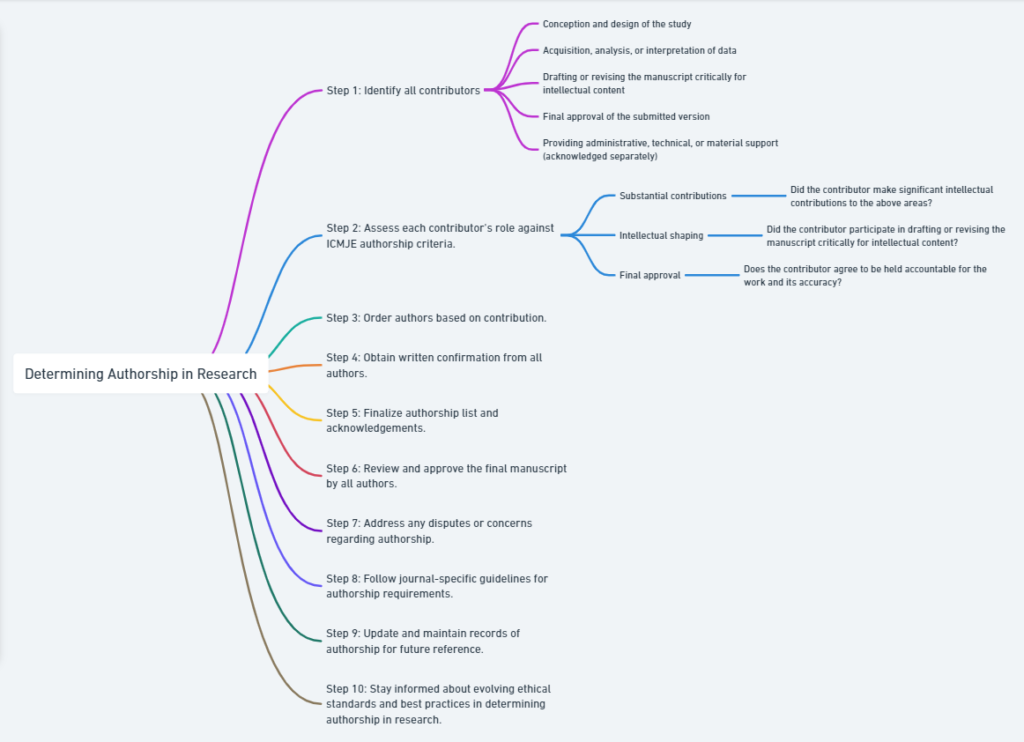
Options for Listing Authors on Openventio: A Quick Guide
Openventio provides clear guidelines for author attribution based on group size and contribution levels. Below is the simplified breakdown:
| Scenario |
Byline |
Acknowledgment |
Explanation |
| Small group (up to 4 authors) |
All authors listed individually |
N/A |
Each author meets all authorship criteria. |
| Medium group (5-15 authors) |
All authors listed individually |
Optional for non-authors |
Some may prefer shorter bylines; non-authors are listed for significant contributions. |
| Large group (>15 authors) |
Writing team/subgroup |
All group members listed |
Writing team takes responsibility; all members are acknowledged for involvement. |
| Large group with formal name (e.g., study group) |
Group name with asterisk |
All individual authors listed |
Group name emphasizes collaboration; individual authors are identified for accountability. |
| Entire group qualifies for authorship |
Group name |
N/A |
All members meet the criteria and have specific contributions identified. |
Examples
- Example 1: A research team of 5 members conducted a study. All 5 members made substantial contributions to the conception, design, execution, analysis, and interpretation of the data. All 5 members would be listed as authors and would meet all authorship criteria.
- Example 2: A research team of 15 members conducted a large-scale survey. While all members contributed to the project, only 8 members made significant intellectual contributions to the writing and revision of the manuscript. These 8 members would be listed as authors, while the remaining 7 members would be acknowledged in the acknowledgements section for their contributions to data collection or recruitment.
Important Points
- At least one individual should be named as the corresponding author for accountability.
- Individual authors should be distinguished from non-author contributors.
- Group author articles should use clear formatting and coding for easy search and retrieval.
- AMA citation format should be indicated for the article.
- Authorship should be based on significant contributions, not just participation.
CONTRIBUTORSHIP AND ACKNOWLEDGEMENTS
Individuals who made valuable contributions but did not meet authorship criteria deserve proper recognition. Acknowledgements allow authors to thank collaborators, supporters, and others who aided the research. Consider acknowledging:
- Supporters: Funding agencies, equipment donors, and material providers.
- Contributors: Individuals who made substantial intellectual contributions, such as data analysis, biostatisticians, writing assistance, or critical review.
- Groups: Collaborative groups or anonymous reviewers can be briefly acknowledged.
Remember, clear identification of individuals and their contributions with specific details is crucial for transparency and proper recognition. Refer to COPE guidelines for further details on contributorship (https://publicationethics.org/authorship).
PROCEDURES FOR HANDLING SUSPECTED MISCONDUCT
Openventio fiercely patrons ethical research and publication. We adhere to COPE’s comprehensive flowchart for investigating suspected cases of plagiarism, fabricated data, authorship disputes, or undisclosed conflicts of interest (https://publicationethics.org/guidance/Flowcharts). Our dedicated Editorial Board carefully examines each case and makes informed decisions based on established ethical frameworks. We encourage clear communication and prompt action to uphold the integrity of research and publication.
- Pre-Review: Before entering peer review, manuscripts undergo a rigorous pre-review screening process ensuring quality and ethical soundness. This critical step involves:
- Plagiarism Detection: We employ industry-standard tools to identify and address potential plagiarism concerns, safeguarding original research contributions.
- Visual Data Inspection: We meticulously scrutinize every image submitted, applying keen visual analysis to detect inconsistencies, artifacts, or anomalies that might compromise the research integrity. For an added layer of protection, we leverage advanced forensic tools to delve deeper into suspicious cases, ensuring only the most trustworthy visuals find their way into published articles.
- Ethical and Legal Compliance: Manuscripts are thoroughly reviewed for essential statements like copyright notices, ethics committee approvals, informed consent documentation, conflict of interest disclosures, animal ethics board approvals, authorship clarity, funding acknowledgments, data ownership information, and adherence to relevant regulations and standards like GCP for clinical trials, AERA/BERA for education research, and established guidelines for animal research.
- Consequences and Commitment: Before or during the peer review manuscripts failing to meet these requirements even after following the standards will be promptly rejected, reflecting Openventio’s unwavering commitment to maintaining the highest ethical standards.
- Reporting Misconduct: Openventio takes all allegations of research or publication misconduct seriously. Institutions, grant funders, or governing bodies can contact us at contact@openventio.org to report any potential issues. We promptly investigate such claims by establishing ethical guidelines and institutional policies by taking COPE’s flowcharts (https://publicationethics.org/guidance/Flowcharts) as guidance.
- Building Trust Through Action: By diligently upholding these principles at every stage, Openventio strives to promote ethical and reliable research practices. This dedication builds trust in published content, ultimately driving the advancement of knowledge and positive societal impact.
CONFLICTS OF INTEREST (COI)
Transparency regarding financial interests and potential biases is essential in maintaining scientific objectivity. Authors must disclose any potential COI that could influence the research or its interpretation. Refer to the ICMJE COI form (http://www.icmje.org/conflicts-of-interest) and ensure you include a COI statement after the manuscript’s conclusion or acknowledgement section. Openventio takes COI disclosures seriously and implements safeguards to minimize bias and maintain research integrity.
Examples
- Example 1: A researcher receives funding from a pharmaceutical company to conduct a study on a new drug. The researcher discloses this conflict of interest in the manuscript and takes steps to mitigate it, such as by having an independent data safety monitoring board review the study.
- Example 2: A researcher works for a university that has a patent on a technology that is related to the researcher’s study. The researcher discloses this conflict of interest in the manuscript and explains how it might bias the study results.
DATA SHARING AND REPRODUCIBILITY
Data sharing and reproducibility are crucial aspects of scientific integrity and research advancement. To ensure transparency and the ability to verify and build upon published findings, open access scholarly publishers have a responsibility to implement robust policies in these areas.
Importance of Data Sharing and Reproducibility
- Transparency and validation: Sharing data allows independent researchers to verify and replicate published findings, thereby strengthening the scientific validity of the research.
- Building new knowledge: Open access to data enables researchers to analyze it from different perspectives, leading to discoveries and innovations.
- Efficiency and cost-savings: Replicating research can be costly and time-consuming. Sharing data avoids unnecessary duplication of effort and reduces research costs.
- Public trust: Data sharing and reproducibility demonstrate scientific commitment to rigor and integrity, fostering public trust in research findings.
However, we recognize the challenges in achieving this ideal. Many open access journals lack clear data sharing policies, and technical, cultural, and economic factors can create barriers to sharing.
Openventio’s Commitment to Data Sharing
- Clear and comprehensive data sharing policies: We’re developing robust policies that outline data availability requirements, preferred formats, hosting platforms, and access permissions or restrictions.
- Author support: We provide resources and templates to help authors prepare and share their data easily.
- Partnership with data repositories: We collaborate with trusted repositories such as CrossRef—A giant metadata repository (https://www.crossref.org/titleList/) to ensure secure storage, long-term accessibility, and proper metadata management of shared data.
- FAIR data principles: We prioritize FAIR (Findable, Accessible, Interoperable, and Reusable; https://www.go-fair.org/fair-principles/) principles in data management to maximize usability and discovery.
- Reporting guidelines and trial registration: We encourage authors to utilize standardized reporting guidelines and register clinical trials (https://classic.clinicaltrials.gov/ct2/search/advanced) to enhance transparency and reproducibility.
- Monitoring and enforcement: We regularly monitor data sharing compliance and implement clear procedures for addressing non-compliance.
Examples
- Example 1: A researcher conducts a clinical trial on a new drug. The researcher chooses to publish the data in a journal that requires data sharing. The researcher makes the anonymized data set available in a public repository after publication, along with a codebook explaining the variables and their meanings.
- Example 2: A researcher conducts a qualitative study with a small group of participants. The researcher chooses to publish the data in a journal that allows authors to choose whether or not to share data. The researcher decides not to share the data publicly due to concerns about participant privacy. However, the researcher offers to share the data with other researchers upon request, with appropriate safeguards in place to protect the privacy of the participants.
ETHICAL OVERSIGHT
Ensuring ethical research practices is fundamental to scientific integrity and protecting individuals and communities involved. Openventio’s commitment to ethical oversight encompasses various aspects:
Informed Consent: Participants must voluntarily agree to participate after fully understanding the research’s risks and benefits. This adheres to core ethical principles in research involving human subjects.
Vulnerable Populations: Research involving children, pregnant women, or individuals with disabilities requires additional ethical considerations. Openventio emphasizes minimizing risks, maximizing benefits, involving communities in research design, and employing robust oversight mechanisms for such studies.
Research with Animals: Animal research must adhere to strict ethical principles to minimize pain and suffering while ensuring scientific rigor. Openventio advocates for the 3Rs (Replacement, Reduction, and Refinement) and prioritizes animal welfare through species-specific care, veterinary oversight, and transparent reporting.
Research with Human Subjects: Human subjects demand meticulous ethical consideration, safeguarding participants’ rights and well-being. Core principles like respect, maximizing benefits while minimizing harm, and equitable practices ensure research benefits all without exploitation (https://www.wma.net/wp-content/uploads/2018/07/DoH-Oct2008.pdf).
Handling Confidential Data: Research often thrives on sensitive participant data, making its protection paramount to respect privacy and uphold trust. Informed consent empowers participants, while robust security measures shield data from unauthorized access and loss. Remember, less is more – minimize data collection for maximum focus on research objectives.
Ethical Business and Marketing Practices: Scientific publishers and research institutions share the responsibility of navigating ethical business and marketing practices. This means shunning predatory tactics, prioritizing transparency in fees and policies, and actively combating research misconduct. By embracing these principles, we nurture a trustworthy and responsible research ecosystem.
By upholding these principles, Openventio fosters a trustworthy and credible environment for scientific research and publication.
Openventio’s Commitment to Ethical Standards
Openventio Publishers is committed to upholding the highest ethical standards in research and publishing. We adhere to the following guidelines:
Copyright Policy
Patient(s)/Participant(s) Consent Statement
- Authors are required to provide a consent statement at the end of their manuscript and retain signed consent forms, if applicable.
- A distinction is made between patient consent for images/photographs and participant consent for involvement in studies (https://www.wma.net/wp-content/uploads/2018/07/DoH-Oct2008.pdf).
Research Ethics Committee or Institutional Review Board (IRB) Approval
Animal Ethics and Welfare Guidelines
- Manuscripts are considered only if they adhere to international, national, and institutional animal welfare guidelines and relevant legislation.
- Ethical review committee approval is required, and studies involving client-owned animals must demonstrate high standards of veterinary care and informed client consent.
- Authors must sign a letter certifying compliance with ethical and legal requirements for animal treatment.
- For more information, please refer to the following link, https://www.nal.usda.gov/animal-health-and-welfare/animal-use-alternatives.
- Manuscripts may be rejected if they fail to meet animal ethics requirements, involve unnecessary pain or suffering, or raise ethical or welfare concerns.
INTELLECTUAL PROPERTY RIGHTS
Transparency and fairness are central to Openventio’s commitment to scholarly excellence. This extends to our policies surrounding intellectual property (IP), including copyright and publishing licenses. We believe authors and readers deserve clarity on:
- Copyright Ownership and Licensing: Our policies clearly define copyright ownership and available licensing options, allowing authors to retain appropriate control over their work while promoting dissemination and accessibility. Refer to our dedicated Licensing and Copyright Terms section in any of our journals.
- Costs and Fees: Associated costs, such as article processing charges (APCs), are always communicated upfront and transparently. You can find a comprehensive breakdown of fees on our website (https://openventio.org/article-processing-charges-apc/). We are committed to ensuring that APCs or waiver status have no bearing on editorial decisions.
- Pre-Publication Disclosure: To ensure fair peer review and publication, we specify what constitutes pre-publication activity that may preclude consideration for publication. This includes presentations, abstracts, and publicly available material exceeding specified limits.
- Plagiarism and Redundant Publications: Openventio takes academic integrity seriously. We clearly define plagiarism, including self-plagiarism, and policies concerning publication ethics are readily available in the Scientific Misconduct section. We also discourage redundant or overlapping publications, emphasizing transparency and originality in research contributions.
Guiding Frameworks
Openventio’s IP policies are grounded in established ethical frameworks, including:
- Committee on Publication Ethics (COPE): Provides comprehensive guidance on authorship, intellectual property, and publication ethics (https://publicationethics.org/intellectualproperty).
- International Committee of Medical Journal Editors (ICMJE): Offers detailed guidelines on authorship, conflict of interest disclosure, and other ethical considerations relevant to research publications.
- American Medical Association (AMA): Establishes ethical principles for medical research and publication, including responsible data sharing and authorship practices.
POST-PUBLICATION DIALOGUE
At Openventio, we recognize that scientific knowledge is rarely static. New evidence emerges, interpretations evolve, and perspectives shift. Embracing this dynamic nature of research, we actively encourage post-publication discourse and corrections as essential tools for refining understanding and solidifying knowledge.
- Letters to the Editors: We welcome spirited yet constructive discussion by inviting readers to submit letters to the editors. These letters can offer alternative interpretations, raise insightful questions, or build upon published findings, fueling further exploration and enriching the scholarly dialogue.
- Errata: Minor errors or updated information discovered after publication can be swiftly addressed through our errata submission process. Authors are empowered to ensure the continued accuracy and relevance of their research, upholding the integrity of the scientific record.
- Editorials: In-depth analyses and critical examinations of published research from our editorial team are invited to add further context and stimulate wider discussion. These editorials provide an additional layer of commentary and interpretation, fostering a comprehensive understanding of the issues raised in the presented studies.
RETRACTION, CORRECTIONS, & WITHDRAWAL POLICIES
Openventio is committed to maintaining the highest standards of scientific integrity and publication ethics. This policy outlines procedures for retraction, correction, and withdrawal of published articles.
Retraction
Retraction is reserved for serious cases of research misconduct (e.g., falsification, fabrication, plagiarism) or major errors that compromise the article’s scientific integrity. Retraction decisions require agreement from all authors, their institution(s), and any relevant funding agencies. In exceptional cases where authors disagree, the editor may, in consultation with relevant parties, initiate a retraction process and disclose the reasons for disagreement by publishing an expression of concern.
Retraction Process
We act decisively to address concerns about published articles through a transparent and efficient process:
1. Identification and Author Notification
- Concerns are identified by authors, reviewers, editors, or readers and investigated thoroughly.
- Authors are promptly informed of potential retraction.
2. Author Collaboration and Notice
- In ideal scenarios, authors agree to retraction and submit a signed notice detailing specific reasons.
- However, if an author disagrees or remains uncontactable, the Editor-in-Chief or the handling Editor will, after diligent consultation with relevant bodies, initiate the retraction process and publish an Expression of Concern to the public. This ensures responsible action and public transparency.
3. Visibility and Accessibility
- The original article is prominently marked as “Retracted” online and in PDFs.
- A clear retraction notice is published, including:
Title: “Retraction: [Original Article Title]”
Reasons for retraction
Impact (if applicable)
Contact information
4. Maintaining Records and Informing Databases
- Indexing services are notified to ensure database updates.
- A complete record of the retraction notice and documentation is publicly accessible on our website.
5. Transparency and Communication
- The retraction is acknowledged publicly on our website.
- Open communication is maintained with authors and readers.
Our unwavering commitment to research integrity guides our actions, ensuring accuracy and trustworthiness in the scientific record.
Corrections
Corrigenda or errata will be published in the journal issue following the discovery of minor errors (eg, doi: 10.17140/GOROJ-9-160). Authors should promptly notify the editorial office of any such errors identified after publication.
Retraction vs. Correction
- Retractions are reserved for serious issues that fundamentally undermine the validity or integrity of a published article, such as data fabrication, plagiarism, or ethical breaches. They essentially withdraw the article from the scientific record.
- Corrections are used for less serious issues that do not fundamentally alter the overall conclusions of the article. They maintain the article’s presence but address specific errors or omissions. Common types of corrections include errata (for minor errors) and corrigenda (for more significant errors).
- Additional publications, such as letters to the editor or follow-up studies, can also be used to address limitations or provide further context, but they do not directly modify the original article.
Withdrawal Policies
Free Withdrawal: Authors can withdraw their manuscripts free of charge within the first 24 hours after submission. This allows for immediate retraction in case of impulsive submissions.
Reduced Fee Withdrawal: If authors withdraw their manuscript between 24 and 48 hours after submission, a reduced withdrawal fee of USD 75 will be applicable. This covers the initial administrative handling and preliminary screening.
Standard Fee Withdrawal: If authors withdraw their manuscript after 48 hours of submission but before any review process begins (including initial pre-quality assessment), a withdrawal fee of USD 179 will be charged. This reflects the effort invested in handling and pre-assessing the manuscript.
After Review, Before Acceptance: If authors withdraw their manuscript after receiving review feedback, but before it is accepted for publication, a withdrawal fee of 50-75% of the agreed Article Processing Charge (APC) will be charged. This reflects the significant editorial effort invested in the peer review process.
After Acceptance: Once an article is accepted for publication, withdrawal is not possible. Authors can address any concerns through corrections or retractions as necessary.
Article Processing Charges (APCs)
APCs paid for accepted and published articles are non-refundable, even in cases of retraction.
DUPLICATE PUBLICATION
Duplicate publication, republishing work without transparent and proper referencing, violates this commitment. This can distort evidence and mislead readers, undermining trust in scientific communication. We take duplicate publication seriously and adhere to international guidelines: any manuscripts with potential overlap must be disclosed. We understand situations like follow-up publications to preliminary reports and consider them on a case-by-case basis. Public health emergencies may necessitate immediate information sharing, and we prioritize authors who ensure data accessibility. Sharing scientific findings outside of peer-reviewed publications can impact publication priority, and authors should consider preprint servers responsibly. If duplicate publication concerns arise, we follow established protocols: contacting authors for clarification, consulting other editors if needed, and potentially publishing notices to inform readers. We collaborate with other journals and academic institutions to uphold ethical standards and address violations. By safeguarding research integrity, we ensure the quality and reliability of the information you encounter on Openventio.
Duplicate Publication Handling Process
1. Initial Assessment:
- Editors: Upon suspecting duplicate publication, editors carefully examine the manuscripts in question, comparing content, data, and authorship.
- Author Contact: Editors reach out to authors for a written explanation, clarifying reasons for potential overlap, and seeking any justifications.
- Expert Consultation: If necessary, editors may consult external experts or the editor of the other journal involved for further assessment.
2. Confirmation and Action
- Agreement on Duplication: If both editors concur that duplicate publication has occurred, the journal that published later takes action:
- Notice of Duplicate Publication: A notice informing readers of the duplication is published in a visible format (e.g., editorial page, table of contents). It includes citations for all duplicate articles and, ideally, a signed explanation from the author(s).
- Retraction: In severe cases, the duplicated article may be retracted entirely.
- Institutional Notification: Editors may inform the author’s institution (department chair, dean) to seek assistance or initiate disciplinary measures.
3. Cross-Journal Cooperation and Prevention
- Communication: Journals involved communicate transparently to ensure consistent action and inform readers appropriately.
- Shared Databases: We maintain shared databases to track duplicate publications and impose sanctions on offending authors (e.g., temporary bans).
- Author Education: We encourage journals and academic institutions should promote awareness of ethical research practices and the importance of responsible publication.
- Plagiarism Detection Tools: We use plagiarism detection software to screen for potential duplication during the editorial process.
4. Ethical Considerations
- Research Integrity: Duplicate publication undermines trust in scientific research and can lead to misinterpretation of evidence.
- Wasted Resources: It wastes the time and resources of editors, reviewers, and readers.
- Author Misconduct: It can signal a disregard for ethical standards and potentially lead to reputational damage for authors and institutions.
5. Additional Considerations
- Context Matters: Editors consider the specific circumstances of each case, including the extent of overlap, author intentions, and potential harm to the research community.
- Public Health Emergencies: In cases of public health emergencies, rapid information dissemination may take precedence over strict adherence to duplicate publication guidelines.
- Preprint Servers: Authors should use preprint servers responsibly, disclosing preprint postings during journal submission.
- Joint Publication: In rare cases, editors of different journals may agree to simultaneous or joint publication if deemed beneficial for public health.
ARTIFICIAL INTELLIGENCE (AI)-ASSISTED TECHNOLOGY IN PUBLISHING
At Openventio, we understand the potential of AI-assisted technologies in research, while prioritizing transparency, ethical use, and human responsibility. In line with ICMJE and COPE recommendations, we require:
Transparency and Disclosure
- Mandatory Disclosure: Authors must explicitly disclose any use of AI tools (LLMs, chatbots, image generators) in the cover letter and manuscript, detailing their specific role and contribution to the research.
- Clear Definitions: Provide clear definitions of “AI-assisted technology” and explain the importance of disclosure to ensure reader understanding and adherence to ethical research practices.
Human Expertise and Ethics
- Human Responsibility: Authors, not AI tools, hold ultimate responsibility for the research: its accuracy, integrity, originality, and ethical implications. This aligns with ICMJE’s emphasis on authorship criteria.
- Critical Review and Editing: Authors must carefully review and edit AI-generated content to address potential biases, and errors, and ensure it aligns with research objectives, as emphasized by COPE.
- No AI Authorship: AI tools cannot be listed as authors or co-authors, nor cited as references. Acknowledge any AI-generated elements with proper attribution, as per ICMJE recommendations.
Transparency in Published Work
- Methodology Section: Provide detailed information on the specific role of AI tools in the research methodology section, offering readers transparency and context, as endorsed by COPE.
- Focus on Human Contribution: While acknowledging the contribution of AI tools, the main focus should remain on the intellectual and scientific work of human authors, aligning with ICMJE’s focus on authorship.
COPE Considerations
- AI Limitations: Remember, AI tools have limitations and can produce inaccurate or biased outputs. Authors must remain critical and exercise careful judgment, as stressed by COPE.
- Misleading Representation: Avoid exaggerating the role of AI or misrepresenting its contribution to prevent misleading readers, as highlighted by COPE.
ICMJE Considerations
- Author Responsibility: Authors must remain vigilant about potential errors or biases introduced by AI tools and ensure the research outcomes are accurate, unbiased, and trustworthy.
- Proper Attribution: Authors must provide proper attribution for all quoted material, including full citations, regardless of its origin (human or AI-generated). This aligns with COPE’s emphasis on ethical research practices and transparency.
By upholding these principles, Openventio champions responsible AI integration in research while safeguarding the essential values of scientific scholarship. We empower researchers to leverage AI tools ethically and ensure the public’s trust in the quality and reliability of published work.
POLICIES AND PROCEDURES FOR HANDLING COMPLAINTS AND APPEALS
Openventio is committed to upholding the highest ethical standards in scholarly publishing. This includes providing a fair and transparent process for handling complaints and appeals related to editorial decisions, research misconduct, and other publishing ethics concerns. These policies and procedures are established by the guidelines of the Committee on Publication Ethics (COPE), the Open Access Scholarly Publishing Association (OASPA), the World Association of Medical Editors (WAME), and the Directory of Open Access Journals (DOAJ).
These policies and procedures apply to all complaints and appeals received by Openventio regarding:
- Editorial decisions: This includes concerns about the peer-review process, manuscript rejection, retraction, or any other decision related to the publication of an article.
- Research misconduct: This includes allegations of plagiarism, fabrication, falsification, or other forms of scientific dishonesty.
- Other publishing ethics concerns: This includes issues related to authorship, conflict of interest, data sharing, and any other ethical violation outlined in the journal’s guidelines.
Process for Complaints
- Submission: Complaints must be submitted in writing to the Openventio Editorial Office via email (contact@openventio.org). The complaint should clearly state the nature of the issue, the desired outcome, and any supporting evidence.
- Initial Review: The Editorial Office will acknowledge receipt of the complaint within 5 business days and conduct an initial review to ensure it falls within the scope of these policies and procedures.
- Investigation: If the complaint is deemed valid, the Editorial Office will conduct a thorough investigation, potentially involving consulting with relevant experts or committees. The complainant will be kept informed of the progress of the investigation.
- Decision: The Editorial Office will issue a written decision on the complaint within 30 business days of the initial review. The decision will be based on the evidence collected and will be communicated to both the complainant and the respondent (if applicable).
- Appeal: If the complainant is not satisfied with the decision, they may submit a written appeal to the Editor-in-Chief within 15 business days of receiving the decision. The appeal should explain why the complainant believes the original decision was incorrect.
- Appeal Review: The Editor-in-Chief will assemble an independent committee to review the appeal. The committee will consider all relevant information and make a final decision, which will be communicated to both parties within 30 business days.
Confidentiality
Openventio will treat all complaints and appeals with confidentiality to the extent possible. However, certain information may need to be disclosed to ensure a fair and thorough investigation. All parties involved will be informed of the level of confidentiality that can be maintained.
Record Keeping
Openventio will maintain a record of all complaints and appeals received, including the nature of the complaint, the investigation conducted, the decision reached, and any appeals made. These records will be kept for a minimum of five years.
Openventio believes that a robust and transparent complaints and appeals process is essential for upholding the integrity of scholarly publishing. These policies and procedures are designed to ensure that all concerns are addressed fairly and promptly. We encourage authors, reviewers, and other stakeholders to raise any ethical concerns they may have.
DEIAC: AT THE HEART OF OPENVENTIO
We believe it fuels scientific progress and better health for all. We foster an open, fair, and representative publishing environment, aligned with best practices and Diversity, Equity, Inclusion, and Accessibility Capacity (DEIAC) resources. We welcome diverse voices and perspectives and continuously evaluate and improve our DEIAC efforts. Join us in building a more inclusive scholarly future.
CONTACT
Authors with questions about the above policies should contact the editorial office at contact@openventio.org.
ENSURING QUALITY PEER REVIEW AT OPENVENTIO: A STEP-BY-STEP GUIDE
At Openventio, we are committed to publishing top-quality research that meets the highest standards of academic rigor. To achieve this, we employ a meticulous double-blinded peer review process involving both editorial and peer evaluation. Here’s a breakdown of the steps involved:
Step 1: Manuscript Submission
- Authors can submit their work through our online portal or via email.
- Be sure to include a cover letter, author details, and the manuscript itself (all as separate files).
Step 2: Pre-Quality Editorial Assessment (PQA)
- Our expert editorial team conducts an initial assessment of your manuscript. This includes:
- Plagiarism check: Submissions are screened for plagiarism, plagiarism, and fabrication. Content deemed unsuitable for the journal will be promptly rejected.
- Language editing: We may suggest edits to improve conciseness and clarity.
- Structural review: We ensure your manuscript adheres to the required sections and format.
- Author approval: You will receive the revised manuscript for your approval before proceeding further.
Step 3: Double-Blind Peer Review
- Your work is then sent to expert researchers and academics for in-depth review. Both reviewer and author identities remain anonymous throughout this process.
- Based on the feedback received, you will have the opportunity to revise your manuscript. Be sure to highlight your revisions and provide a response to each reviewer’s comment.
- The revised manuscript will then be evaluated again, with possible outcomes of acceptance, rejection, or a request for further revisions.
Step 4: Editorial Decision
- The Editor-in-Chief/Associate Editor/Editor reviews the revised manuscript to ensure it meets the journal’s standards.
- The final decision will be to accept, reject, or re-write and re-submit.
Step 5: Copy Editing & Styling
- We meticulously check your manuscript for formatting, reference style, and overall polish.
- You will have the opportunity to review and confirm the final edited version before publication.
Step 6: Publishing
- Upon acceptance, your article will be published online and made available to the global research community.
OPENVENTIO REVIEWER SELECTION CRITERIA, NUMBER OF REVIEWERS, AND TURNAROUND TIME
Openventio is committed to a rigorous and fair peer review process that ensures the quality and significance of published research. Here’s an overview of our reviewer selection criteria, the number of reviewers assigned per manuscript, and the typical turnaround time for editorial decisions:
Reviewer Selection Criteria:
- Expertise: We select reviewers with recognized expertise in the specific research area of the submitted manuscript. Reviewers should have a strong publication record in relevant journals and be familiar with current methodological approaches.
- Objectivity: We prioritize reviewers who can provide unbiased and constructive feedback, free from personal conflicts of interest.
- Availability: We consider the reviewer’s workload and ensure they can provide a timely review within the designated timeframe.
- Diversity: We strive to select reviewers from diverse backgrounds and institutions to promote a variety of perspectives in the review process.
Number of Reviewers per Manuscript:
Openventio typically assigns two independent reviewers to each manuscript. In some cases, an additional reviewer may be invited for complex or interdisciplinary submissions. The final decision on the number of reviewers rests with the editor based on the specific needs of the manuscript.
Turnaround Time for Decisions:
We understand that authors value prompt feedback on their work. Openventio aims to provide initial editorial decisions within 4-6 weeks of manuscript submission. This timeframe may vary depending on the complexity of the review process, reviewer availability, and any necessary revisions requested by the editor.
We encourage authors to submit high-quality manuscripts that adhere to our submission guidelines. This will facilitate a smooth and efficient review process and expedite the publication timeline.
Additional Information:
- For more details on our instructions to authors and publication ethics and policies, please refer to our Submission Guiding Principles page: https://openventio.org/submission-guiding-principles/
- If you have any questions about the reviewer selection criteria or turnaround time, please contact the editorial team at contact@openventio.org
We believe in transparency and open communication throughout the peer review process. We are committed to providing authors with constructive feedback and ensuring a fair and timely review of their work.
Transparency and Openness
Throughout this process, we maintain open communication with authors, encouraging you to contact the editorial team with any questions or concerns.
All editorial decisions are guided solely by academic merit and contribution to the field and are not influenced by the author’s race, gender, nationality, institutional affiliation, or any other irrelevant factor.
By adhering to these rigorous standards, we aim to ensure that Openventio publishes only the most reliable and impactful research, contributing to the advancement of knowledge across various disciplines.

